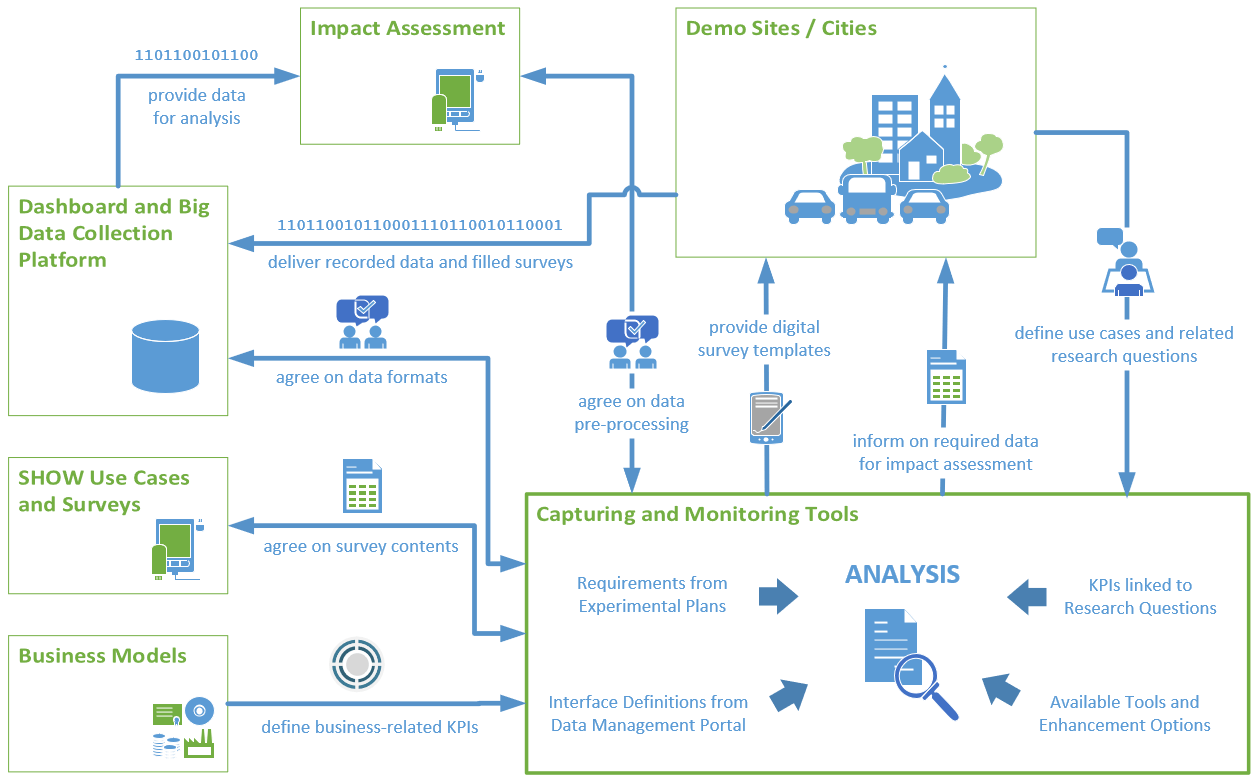
SHOW aims to support the migration path towards effective and persuasive sustainable urban transport through technical solutions, business models and priority scenarios for impact assessment, by deploying shared, connected, electrified fleets of automated vehicles in coordinated Public Transport (PT), Demand Responsive Transport (DRT), Mobility as a Service (MaaS) and Logistics as a Service (LaaS) operational chains in real-life urban demonstrations.
At this point, comprehensive frameworks for evaluations of such an ecosystem, addressing all layers of safety, energy and environmental impact, societal impact, logistics and user experience, awareness and acceptance and their interdependencies are not yet available in full; especially taking into consideration several stakeholder perspectives.
To this extent, one important part of SHOW is the development of a detailed framework of the evaluation of the pre-demonstrations and demonstrations. The pre-demonstration phase in the project is seen as a rehearsal for the final round of demonstrations to come, both in terms of realisation and evaluation.
More specifically, within SHOW, an impact methodology has been created denoted M3ICA (multi-impact, multi-criteria, and multi-actor), which allows for consistent analysis and evaluation of demonstrations and simulations within the ecosystem of electric connected automated vehicles. The developed impact assessment methodology brings together existing impact assessment frameworks on AVs, such as Trilateral, Levitate, Milakis. The preparation of the demonstration sites evaluations is based on the Field opErational teSt support methodology (FESTA) stepwise procedure covering identification of Systems and services, Use Cases, Research Questions, KPIs and Measures, Evaluation Methods and Capturing and monitoring tools.
To allow for a comprehensive impact assessment, all data captured at the different demonstration sites will be collected in a consistent format including all necessary information. The subjective data will be collected through a centralised webtool and objective data will be collected and stored locally at the sites and/or centrally in the project Data Collection Platform.
Specific KPIs and other important data will be visualised in the local test site dashboards, when existing, and in an aggregated manner in the central SHOW Dashboard. All the relevant interactions among the different activities of SHOW are depicted in the Figure below.

SHOW Evaluation Framework (Source: AVL)
The evaluation framework is expected to be updated to cover the full experimental design for the final demonstrations of the project.
For more information on the common parametric evaluation framework for SHOW demonstrations and on the description of the methodological approach for the pre-demonstration evaluations, please read D9.2 “Pilot experimental plans, KPIs definition & impact assessment framework for pre-demo evaluation” available here.
You can also contact Anna Anund from VTI at anna.anund [at] vti.se.